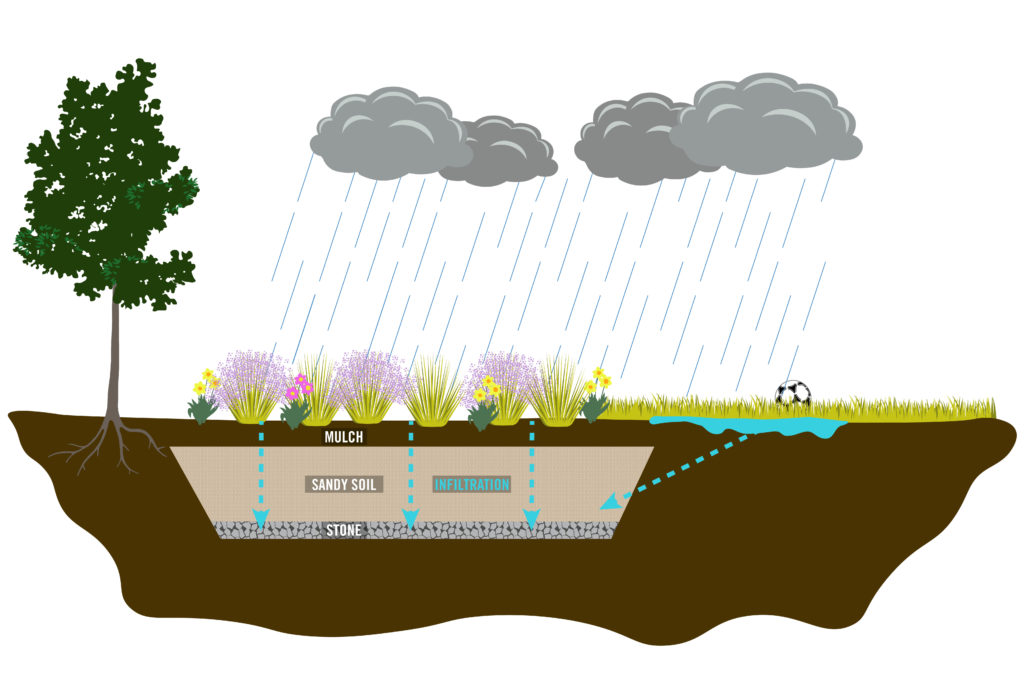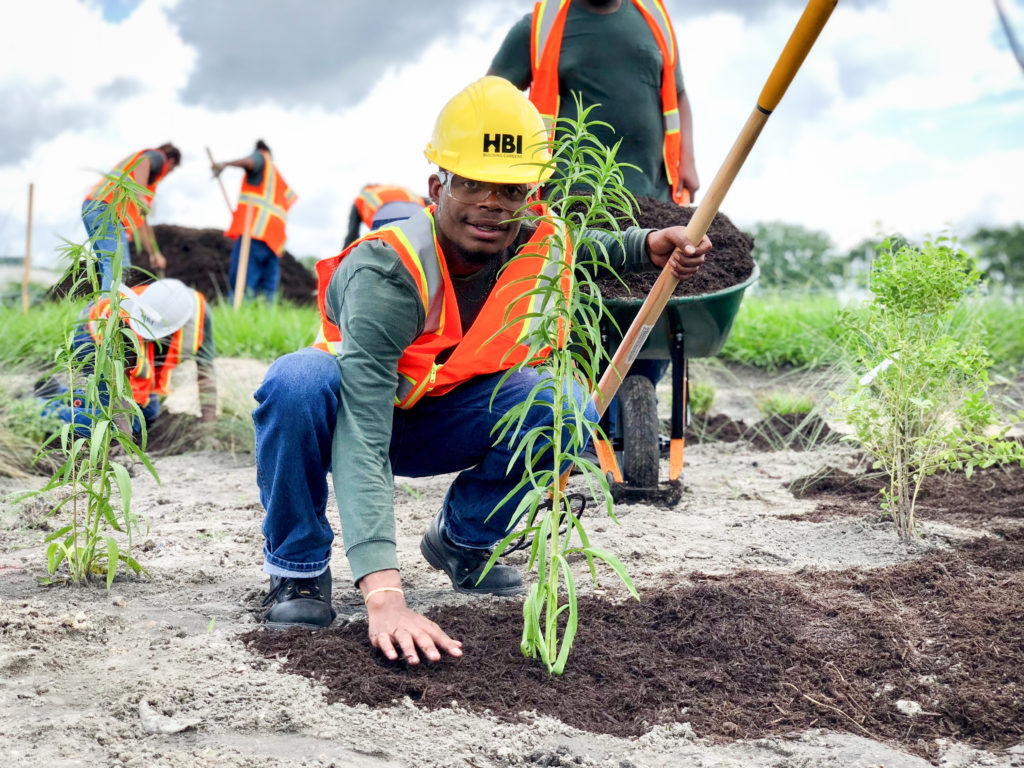The area next to the soccer field at Brunswick’s Howard Coffin Park received a much-needed face-lift in the form of native plants and new soil.
The 3,000-square-foot tract is a large-scale stormwater demonstration project that the University of Georgia Marine Extension and Georgia Sea Grant hopes will educate visitors on ways to improve water quality.
Protecting water quality
Jessica Brown, stormwater specialist at Marine Extension and Georgia Sea Grant, oversaw construction of the site, which is called, in technical terms, a bioretention cell.
“This project will serve as a case study and educational demonstration of a bioretention cell, which is a stormwater management practice that captures and treats runoff,” Brown said. “It’s a form of green infrastructure that helps protect and restore habitat by mimicking the natural water cycle.”
The bioretention cell, next to a tidal ditch, will act as a buffer for the park. When it rains, excess water from the soccer field will flow into the bioretention cell, which consists of layers of sandy soils, mulch and stone. Pesticides, fertilizers and other chemicals applied to the playing field will be filtered out through these layers instead of running directly into the tidal creek.

With population growth and increased land development in coastal Georgia, the use of green infrastructure has become increasingly important because it protects water quality and coastal habitats from pollution, Brown said.
Brown worked with the city’s engineer, Garrow Alberson, to design the bioretention cell. City employees constructed the project.
Alberson hopes the project will raise public awareness of green infrastructure practices.
“It seems that a lot of developers and engineers are hesitant to implement these practices because of factors like cost, long-term maintenance and effectiveness,” he said. “Hopefully, the construction of the demonstration cell will show that these practices can be effective for runoff volume reduction and water quality improvement, and that the practices can be cost-effective to install.”
Native plants
The final phase of the project involved installing native plants, selected by Keren Giovengo, EcoScapes program manager for Marine Extension and Georgia Sea Grant, a UGA Public Service and Outreach unit. The EcoScapes Sustainable Land Use program promotes responsible stewardship of natural resources in Georgia through sustainable land development and landscaping practices.
“Because of the size of the bioretention cell, I was able to consider a variety of trees, shrubs, grasses and palms for the site,” Giovengo said. “They were selected to provide a diverse array of local deciduous and evergreen species that are low maintenance and can tolerate drought, flooding and salt.”

Hands-on learning
Twelve students participating in a landscaping course through the Job Corps Center in Brunswick assisted with the planting.
Job Corps, a no-cost education and career technical training program administered by the U.S. Department of Labor, helps young people ages 16 to 24 improve the quality of their lives through career technical and academic training.
“They’re in our program for roughly eight months and we help them earn their high school diploma or learn a trade and become certified,” said Kevin Brandon, landscaping instructor at the Brunswick Job Corps Center.
“We look for as many hands-on opportunities like this as possible because our goal is to get them a job when they complete the course,” he said.
Thanks to help from the students, all 216 native plants were in the ground in less than four hours.
Brown plans to showcase the demonstration site to environmental professionals and public works staff in surrounding counties.
“My hope is that we can do enough demonstration projects, such as this one, to better understand how they perform in a coastal environment and build capacity within the local workforce,” Brown said. “Fostering ownership of these type of practices at the local level will go a long way to support future implementation.”


